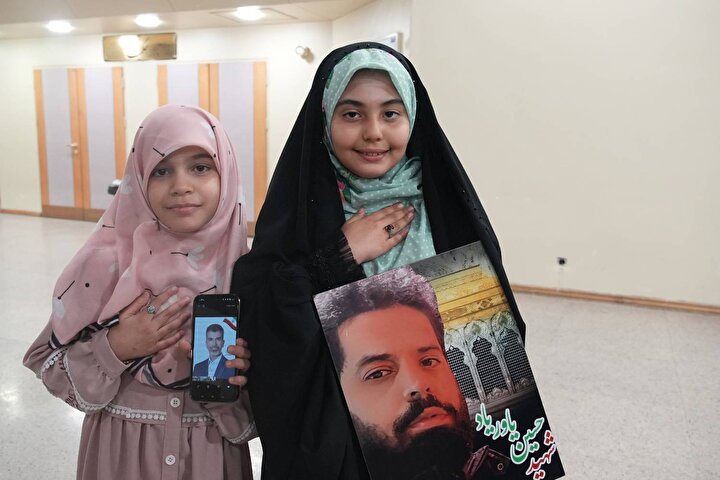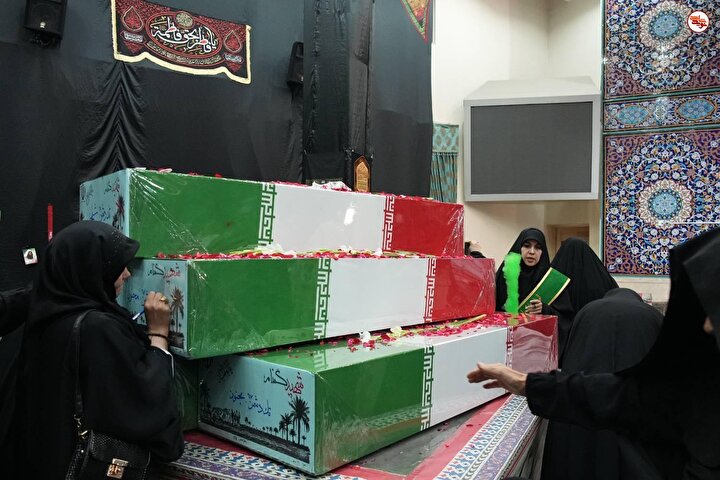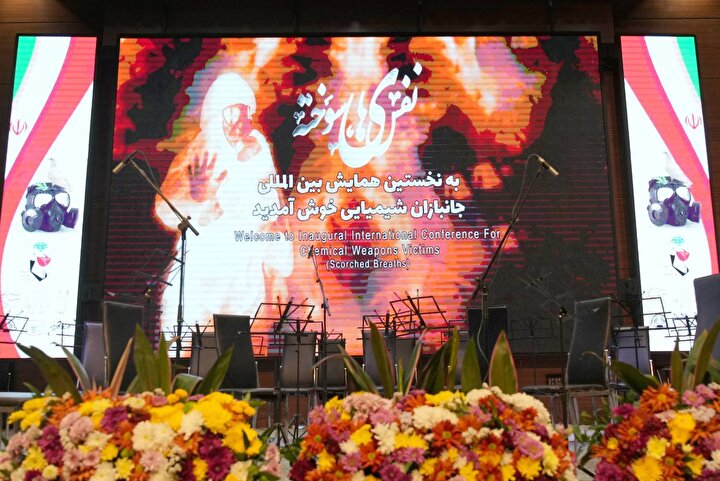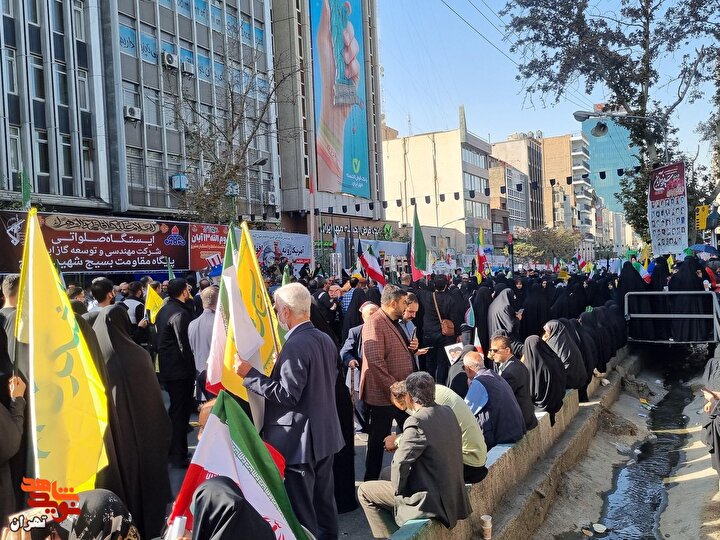
Allameh Tabatabaei
Navideshahed: Allameh Seyyed Mohammad Hussein Tabatabaaei's "Quran in Islam" is published in Thai.

According to IQNAs branch in South Asia, it has been translated by Hojat-ol-Islam Sheikh Saleh and has been released in Thailand by the representative office of Al-Mustafa International University.
The index of the book includes religious sites, Quranic verses and Hadiths and five main chapters.
The five main chapters encompass themes regarding the value of the Quran among Muslims, Quran teaching methodologies, revelation, relation of the Quran with sciences, the order of revelation and issue of promotion of the Quran in society.
In his book, Allameh Tabatabaei has addressed various aspects of the teachings of the Holy Quran and presented a comprehensive interpretation of the Quran based on Al-Mizan Quranic exegesis.
The book has been published in 1000 copies and distributed in Al-Mustafa affiliate bookstores in Bangkok.
Allameh Seyyed Mohammad Hossein Tabatabaei (1892-November 15, 1981) ”Žwas one of the most prominent thinkers of philosophy and contemporary Shia Islam. He is famous for Tafsir al-Mizan, the Quranic exegesis.
Born in Tabriz, Azarbaijan, in northwestern Iran, he studied at Najaf, under masters such as Mirza Ali Qadi (in gnosis), Mirza Muhammad Husain Naini, Shaykh Muhammad Husain Isfahani (in Fiqh and Jurisprudence), Sayyid Abul-Qasim Khwansari (in Mathematics), as well as studying the standard texts of Avicennas Shifa, the Asfar of Sadr al-Din Shirazi, and the Tamhid al-qawaid of Ibn Turkah. Along with Sayyid Husayn Badkubai, he was a student of two of the most famous masters of the time, Sayyid Abul-Hasan Jilwah and Aqa Ali Mudarris Zunuzi.
In his later years he would often hold study sessions with Henry Corbin and Seyyed Hossein Nasr, in which not only the classical texts of divine wisdom and gnosis were discussed, but also a whole cycle of what Nasr calls comparative gnosis, in which in each session the sacred texts of one of the major religions, containing mystical and gnostic teachings, such as theTao Te Ching, the Upanishads and the Gospel of John, were discussed and compared with Sufism and Islamic gnostic doctrines in general.
Tabatabaei, was a philosopher, a prolific writer, and an inspiring teacher to his students who devoted much of his life to Islamic studies. Many of his students were among the ideological founders of the Islamic Republic of Iran, namely Murtaza Motahhari, Dr. Beheshti, and Dr. Mohammad Mofatteh. Others like Nasr and Hasanzadeh Amuli remained and continued their studies in the intellectual non-political sphere.
It was in Najaf where Tabatabaei developed his major contributions in the fields of Tafsir (interpretation), philosophy, and history of the Shia faith. In philosophy the most important of his works is Usul-i falsafeh va ravesh-e-realism (The Principles of Philosophy and the Method of Realism), which has been published in five volumes with explanatory notes and the commentary of Morteza Motahhari. If Ayatollah Haeri is considered the reviver of Qoms hawza in an organizational sense, Tabatabaeis contributions to the field of tafsir, philosophy and mysticism represent the intellectual revitalization of the hawza with lasting implications for the curriculum.
His other major philosophical work is a voluminous commentary of AsfÄ?r al-arbaeh, the magnum opus of Mulla Sadra who was the last of the great Persian (Iranian) Muslim thinkers of the medieval age. Apart from these he also wrote extensively on philosophical topics. His humanist approach is underlined by his three books on: the nature of man - before the world, in this world, and after this world. His philosophy is focused upon the sociological treatment of human problems. His two other works, BidÄ?yat al-hikmah and NihÄ?yat al-hikmah, are considered among works of high order in Islamic philosophy.
Several treatises on the doctrines and history of the Shia remain from him as well. One of these comprises his clarifications and expositions about Shia faith in reply to the questions posed by the famous French orientalist Henry Corbin. Another of his books on this topic Shiah dar Islam was translated into English by Seyyed Hossein Nasr under the title Shia Islam, with the help of William Chittick as a project of Colgate University. These books are claimed to serve as an excellent conduit by which popular misconceptions about the Shia faith may be removed further paving the way for a better ecumenical understanding amongst the various Muslim schools of thought.
His written books number forty-four titles overall; three of which are collections of his articles on various aspects of Islam and the Quran.
The End
Source: ICRO
According to IQNAs branch in South Asia, it has been translated by Hojat-ol-Islam Sheikh Saleh and has been released in Thailand by the representative office of Al-Mustafa International University. The index of the book includes religious sites, Quranic verses and Hadiths and five main chapters. The five main chapters encompass themes regarding the value of the Quran among Muslims, Quran teaching methodologies, revelation, relation of the Quran with sciences, the order of revelation and issue of promotion of the Quran in society. In his book, Allameh Tabatabaei has addressed various aspects of the teachings of the Holy Quran and presented a comprehensive interpretation of the Quran based on Al-Mizan Quranic exegesis. The book has been published in 1000 copies and distributed in Al-Mustafa affiliate bookstores in Bangkok. Allameh Seyyed Mohammad Hossein Tabatabaei (1892-November 15, 1981) ”Žwas one of the most prominent thinkers of philosophy and contemporary Shia Islam. He is famous for Tafsir al-Mizan, the Quranic exegesis. Born in Tabriz, Azarbaijan, in northwestern Iran, he studied at Najaf, under masters such as Mirza Ali Qadi (in gnosis), Mirza Muhammad Husain Naini, Shaykh Muhammad Husain Isfahani (in Fiqh and Jurisprudence), Sayyid Abul-Qasim Khwansari (in Mathematics), as well as studying the standard texts of Avicennas Shifa, the Asfar of Sadr al-Din Shirazi, and the Tamhid al-qawaid of Ibn Turkah. Along with Sayyid Husayn Badkubai, he was a student of two of the most famous masters of the time, Sayyid Abul-Hasan Jilwah and Aqa Ali Mudarris Zunuzi. In his later years he would often hold study sessions with Henry Corbin and Seyyed Hossein Nasr, in which not only the classical texts of divine wisdom and gnosis were discussed, but also a whole cycle of what Nasr calls comparative gnosis, in which in each session the sacred texts of one of the major religions, containing mystical and gnostic teachings, such as theTao Te Ching, the Upanishads and the Gospel of John, were discussed and compared with Sufism and Islamic gnostic doctrines in general. Tabatabaei, was a philosopher, a prolific writer, and an inspiring teacher to his students who devoted much of his life to Islamic studies. Many of his students were among the ideological founders of the Islamic Republic of Iran, namely Murtaza Motahhari, Dr. Beheshti, and Dr. Mohammad Mofatteh. Others like Nasr and Hasanzadeh Amuli remained and continued their studies in the intellectual non-political sphere. It was in Najaf where Tabatabaei developed his major contributions in the fields of Tafsir (interpretation), philosophy, and history of the Shia faith. In philosophy the most important of his works is Usul-i falsafeh va ravesh-e-realism (The Principles of Philosophy and the Method of Realism), which has been published in five volumes with explanatory notes and the commentary of Morteza Motahhari. If Ayatollah Haeri is considered the reviver of Qoms hawza in an organizational sense, Tabatabaeis contributions to the field of tafsir, philosophy and mysticism represent the intellectual revitalization of the hawza with lasting implications for the curriculum. His other major philosophical work is a voluminous commentary of AsfÄ?r al-arbaeh, the magnum opus of Mulla Sadra who was the last of the great Persian (Iranian) Muslim thinkers of the medieval age. Apart from these he also wrote extensively on philosophical topics. His humanist approach is underlined by his three books on: the nature of man - before the world, in this world, and after this world. His philosophy is focused upon the sociological treatment of human problems. His two other works, BidÄ?yat al-hikmah and NihÄ?yat al-hikmah, are considered among works of high order in Islamic philosophy. Several treatises on the doctrines and history of the Shia remain from him as well. One of these comprises his clarifications and expositions about Shia faith in reply to the questions posed by the famous French orientalist Henry Corbin. Another of his books on this topic Shiah dar Islam was translated into English by Seyyed Hossein Nasr under the title Shia Islam, with the help of William Chittick as a project of Colgate University. These books are claimed to serve as an excellent conduit by which popular misconceptions about the Shia faith may be removed further paving the way for a better ecumenical understanding amongst the various Muslim schools of thought. His written books number forty-four titles overall; three of which are collections of his articles on various aspects of Islam and the Quran. The End Source: ICRO



